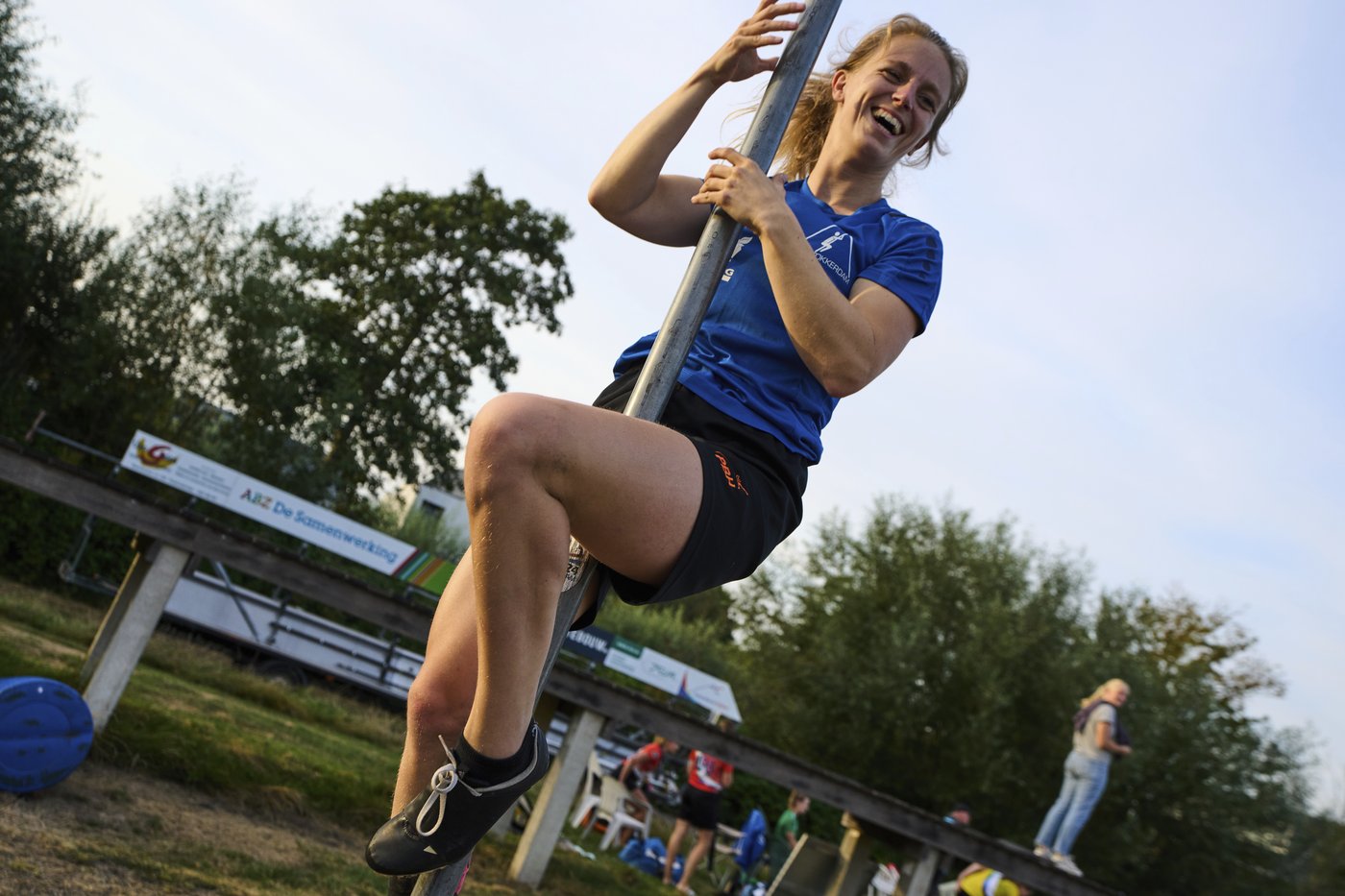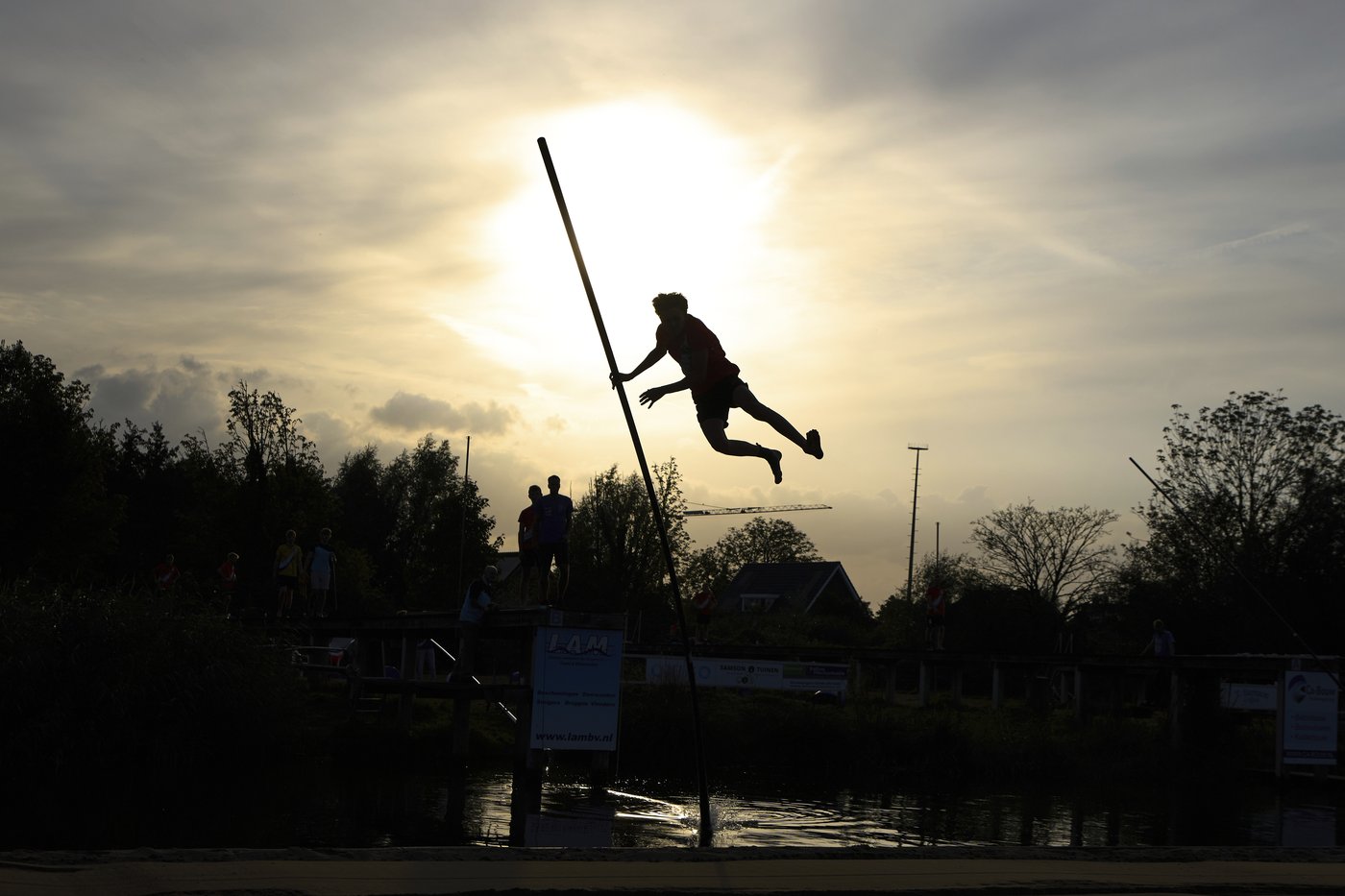Elevate your local knowledge
Sign up for the iNFOnews newsletter today!
Sign up for the iNFOnews newsletter today!
Selecting your primary region ensures you get the stories that matter to you first.

KOCKENGEN, Netherlands (AP) — A split second of flight, then a landing on the sand — or a splashdown in a canal.
That’s the thrill of the Dutch sport of “fierljeppen” — far leaping — which sees athletes hoist themselves up and over canals on slender carbon poles in the Netherlands countryside.
“The moment you are at the top of the pole and you get to jump (off) of the pole, in that small moment you get to fly and that’s just really nice to experience,” 25-year-old athlete Bas van Leeuwen said as jumpers gathered for a competition in a village near Utrecht this week.
‘Not really that dangerous’
Athletes run to a carbon pole positioned with one end in the canal and tilted toward the bank. They run along a jetty to the pole, grab on and try to shin up the pole as fast as possible before leaping to a sandy area on the other bank. Unlike in Olympic pole vaulting, the aim is distance, not height.
Lose momentum, or slip too far to one side, and athletes can end up soaked in the canal. Even a successful landing on the sand means a heavy, even painful, impact.
“The sport is not really that dangerous. I think more people get injured during soccer,” says van Leeuwen, who’s recovered from an ankle ligament injury sustained while leaping over a canal. “The most common (injury) is the ankles or the knees because when you land, that is a fragile part of the body. Sometimes it snaps.”
Following the farmers
Using a pole to cross the Netherlands’ many canals was once a handy way for farmers to get about in remote areas. It took on its modern competitive form in the 1950s and ’60s, says Wim Roskam, a historian of “fierljeppen”.
Technology has made bigger and bigger leaps possible, and the record now stands at 22.21 meters (just over 24 yards), Roskam said.
“The pole, first it was wood. Very heavy, can break,” he said. “Then aluminum, less heavy but still a bit heavy, and now it’s carbon.”
Crowds aren’t big, but the leapers and their fans are dedicated to a sport which has a loyal following in Dutch villages but is nearly unknown in nearby cities, Roskam said. The community is key.
“We are kind of a family. We know each other, we trust each other,” Roskam said. “I can leave my phone here and it’s all right, no problem. We help each other and when there (are) some sad things, we are there for each other too.”
___
AP Sports Writer James Ellingworth in Zandvoort, Netherlands, contributed to this report.
___
AP sports: https://apnews.com/sports




This site is protected by reCAPTCHA and the Google Privacy Policy and Terms of Service apply.
Want to share your thoughts, add context, or connect with others in your community?
You must be logged in to post a comment.